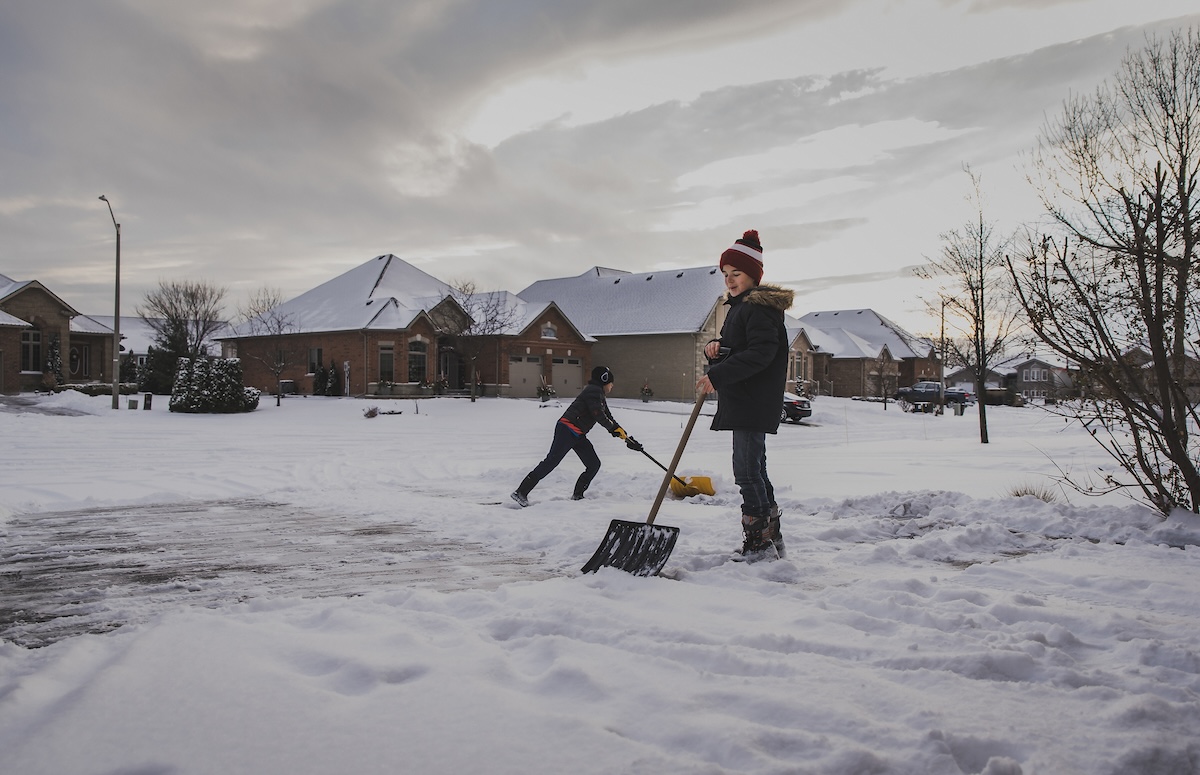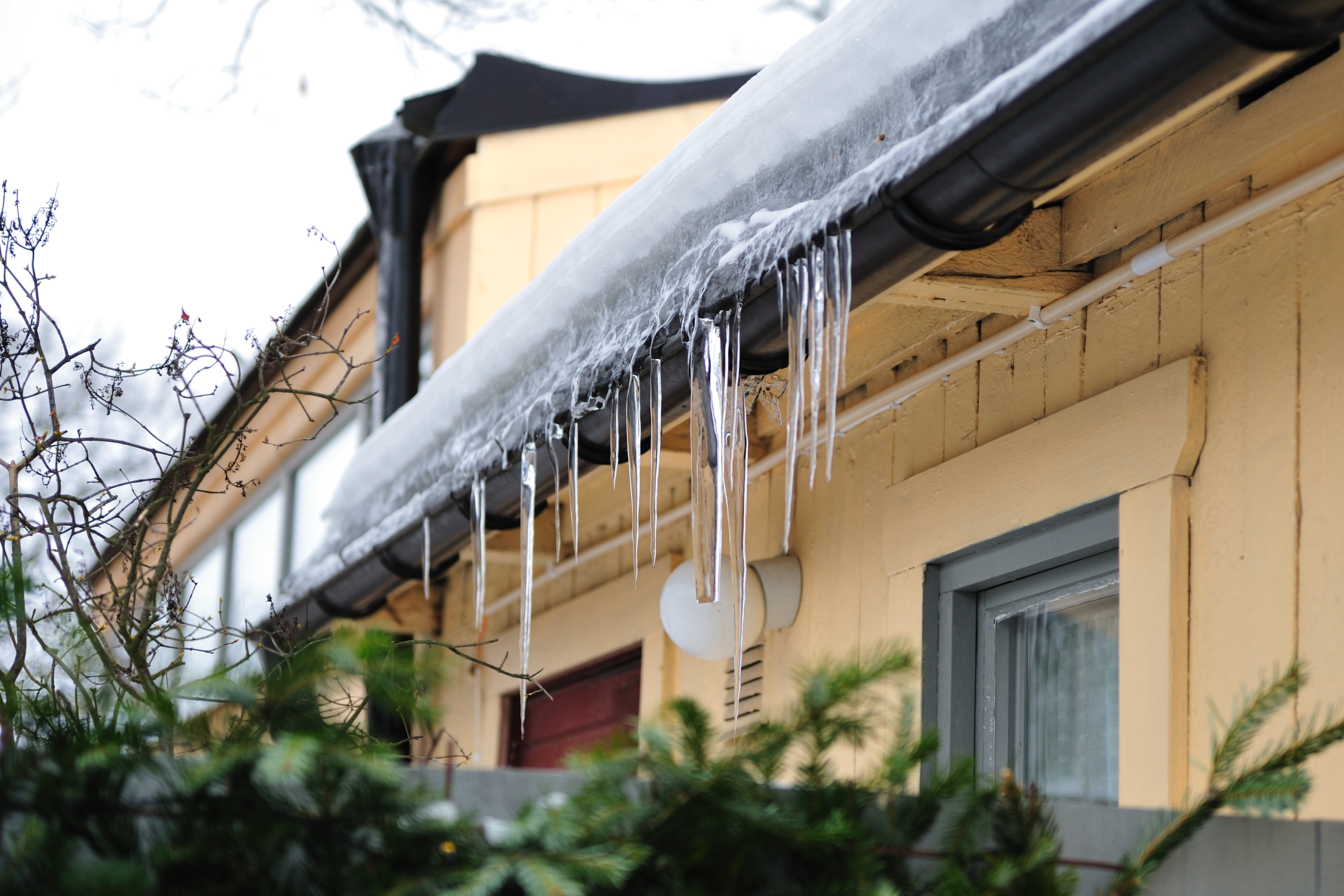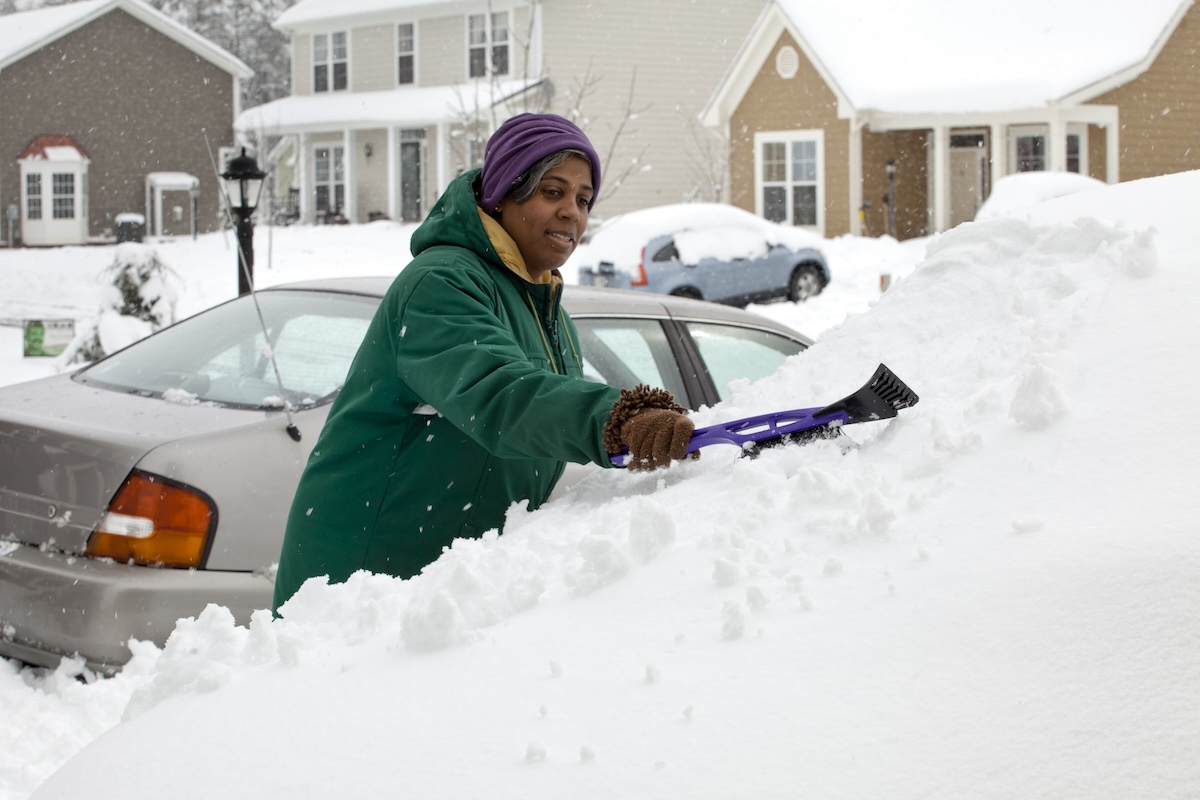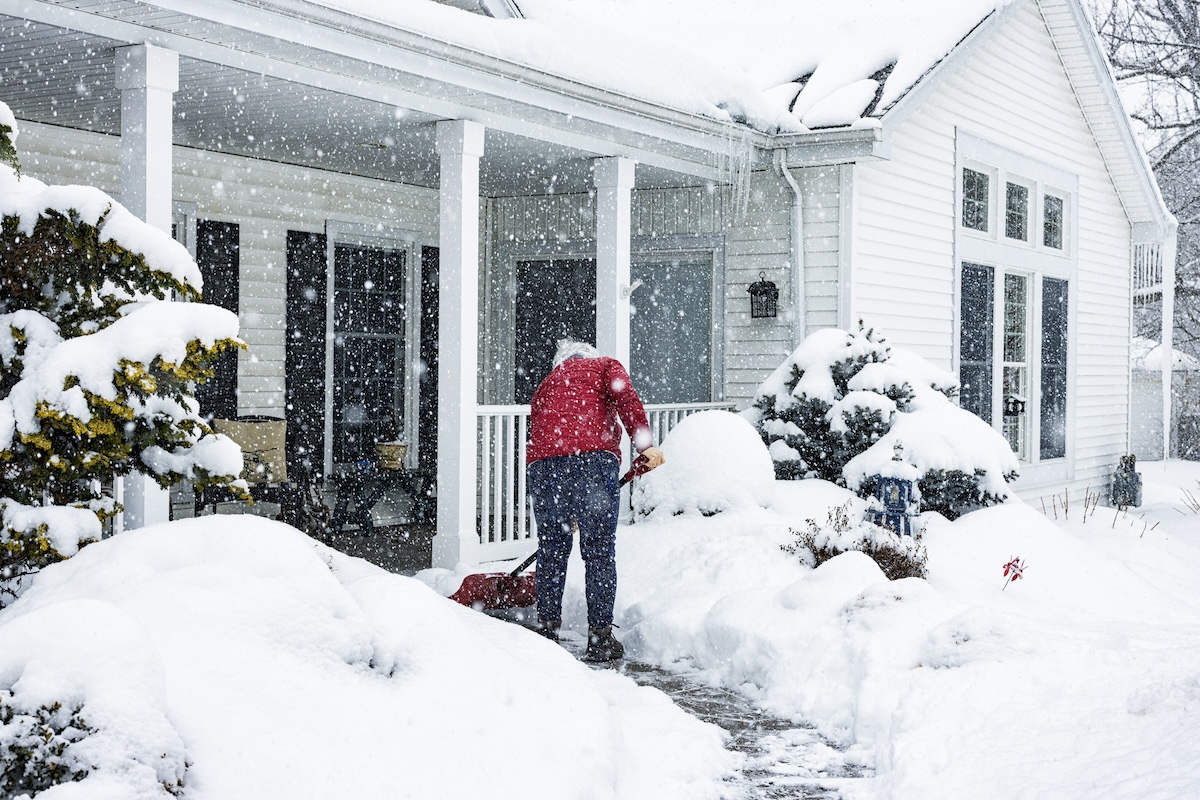We may earn revenue from the products available on this page and participate in affiliate programs. Learn More ›
For over 230 years, The Old Farmer’s Almanac has been publishing much-anticipated weather forecasts with 80 percent accuracy. Every year since 1792, the Almanac has released long-range seasonal weather predictions to help farmers, gardeners, businesses, homeowners, and others plan for the type of weather to come, whether that means stocking up on umbrellas, snow shovels, sunscreen, or fuel.
No other source has forecasted the weather for as long as the Almanac, and nobody has done it without technology and tools like Doppler radar, satellite data, computers, and AI. Instead, the Almanac uses a mysterious proprietary method to predict weather by observing and analyzing a combination of solar science, the study of sunspots (magnetic storms on the Sun’s surface); climatology, the study of prevailing weather patterns; and meteorology, the study of the atmosphere (what short-range weather forecasters do). By looking for trends and comparing weather over the past few years, they can prepare forecasts. Weather predictions for the 2024-2025 winter season, for example, are based on trends from 1991 through 2020.
Unlike last year’s forecast touting cold and snowy weather for much of the country, this winter season is expected to be warmer with less snowfall overall. Keep reading to learn what is influencing the forecasts this year and details about your specific region so you can best prepare for the coming months.
Solar activity will lead to warmer temperatures.
According to the Almanac, the sun is reaching the maximum of Solar Cycle 25 in which the sun’s activity will grow hot and stormy. Historically, this type of high solar activity has led to warmer temperatures. The Almanac believes that the solar cycle and number of sunspots can influence the long-range weather. Therefore, the Almanac predicts that solar maximum in 2024/2025 will result in a milder winter overall.
Ocean patterns will help keep the weather calmer and warmer.
The Almanac also relies on ocean-atmospheric weather patterns, including oscillation cycles like El Niño and La Niña, to predict the weather. Recent water and wind oscillations indicate neutral to warmer temperatures and possibly even normal to below-normal precipitation, with the potential for occasional cold arctic blasts. The Almanac is expecting a neutral El Niño Southern Oscillation (the warm phase) or possibly even a La Niña (the cool phase) this winter, following a strong El Niño experienced last year.

Region 1: Northeast
While those living in Massachusetts, Vermont, New Hampshire, Maine, and eastern New York tend to expect a cold and snowy winter, a gentler-than-normal season is in store this year. Temperatures are expected to be above average. For example, January should be 4 degrees Fahrenheit above average in the far north of this region. Watch out for the coldest periods in mid-December and late February, which should include plenty of snow. The snowiest periods will be in early December, mid-February, and early March. However, precipitation and snowfall should be slightly below normal (1 to 1.5 percent below average).
Region 2: Atlantic Corridor
This highly populated area along the East Coast covers portions of New York, Connecticut, Rhode Island, New Jersey, Delaware, Pennsylvania, Maryland, and Virginia, including major cities from Boston and New York City to Washington, D.C. and Richmond. Temperatures are expected to be average to slightly above average during winter, with blasts of cold air in mid-December, early and late January, and late February. Unlike last year, precipitation will be slightly below normal. Snowfall will be below normal in the north and above normal in the south, with the most snow falling in late December and late February.
Region 3: Appalachians
Spanning most of Pennsylvania, Maryland, and Virginia, and the eastern edge of West Virginia and western part of North Carolina, this region’s weather is influenced by the mountains. This year’s winter should be quite temperate, with slightly warmer than normal temperatures and below-normal precipitation. Bundle up from mid-January through late February. Precipitation will be below normal but snowfall should be average in the north and above-normal in the south, especially in late December, late February, and early March.

Region 4: Southeast
This area includes Georgia, South Carolina, and North Carolina. Like last year, prepare for a wet season. Temperatures will be cooler than normal in the east and warmer than normal in the west. The coldest periods are expected in late November, late January, and late February. Snow is possible in late January through February.
Region 5: Florida
Similar to last year, rainfall will most likely be above normal across the state. Of course, no snowfall is predicted in this popular winter getaway. However, temperatures will be cooler than usual, with the coldest periods expected in the later parts of November, December, January, and February.
Region 6: Lower Lakes
The Lower Lakes region includes much of Michigan, Wisconsin, Illinois, Indiana, Ohio, and New York that border Lake Michigan, Lake Erie, and Lake Ontario. In an area that typically experiences lots of lake effect snow, snowfall and rain will be below average this winter. Enjoy warmer temperatures than usual in the east but colder than normal in the west. The coldest periods should be in November, in early December, and from late January into early February.
Region 7: Ohio Valley
Half of Ohio, all of Kentucky, and portions of Illinois, Indiana, and West Virginia make up the Ohio Valley Region, where The Old Farmer’s Almanac is predicting a colder than normal winter, especially in late January through February. The snowiest periods will be in late December, from late January into early February, in late February, and mid-March.

Region 8: Deep South
In the Deep South—Louisiana, Mississippi, Arkansas, Tennessee, and nearby states—expect warm weather and plenty of precipitation this winter. Temperatures should be consistently warmer than average (about 2 degrees Fahrenheit monthly). The coldest months will be November, January, and February.
Region 9: Upper Midwest
Minnesota, much of Wisconsin, and the eastern edges of North and South Dakota will get to enjoy a less chilly winter this year. Bundle up for the coldest weather in early November, early and late January, late February, and early March. Precipitation and snowfall will be below average, with the snowiest periods in late November, late December, mid- and late January, early February, and mid-March.
Region 10: Heartland
The Heartland consists of Iowa, Missouri, eastern Kansas, and portions of Nebraska and Illinois. Winter will be warmer than normal with the coldest periods in late January and throughout February. Unlike last year, precipitation and snowfall will be below normal. The most snowfall is expected in late January as well as early and late February.

Region 11: Texas and Oklahoma
The Old Farmer’s Almanac is calling for a warmer than average winter, with the coldest periods in late January through February. Fortunately, this region won’t experience the extreme weather that it had 2 years ago with the ice storms that caused massive power outages. There will be less precipitation and drier weather overall. The best chance for snow is in February.
Region 12: High Plains
In the High Plains—which entails portions of Montana, Wyoming, Colorado, New Mexico, Texas, Oklahoma, Kansas, Nebraska, South Dakota, and North Dakota—winter temperatures will be warmer than normal in the northern parts of this region and colder than normal in the southern areas. Unlike last year, expect normal levels of precipitation. Snowfall will be near to above normal; snowiest times should be in mid-November, mid- and late January, and late February.
Region 13: Intermountain
As one of the largest regions in The Old Farmer’s Almanac, Intermountain states include Nevada, Utah, and Idaho, along with a large section of Arizona, Colorado, Wyoming, Montana, Washington, and Oregon. Like last year, this region is expected to be blanketed by lots of snow, with average or above average snowfall. Get ready to make some snow angels in mid-November, early and late January, and mid-March. However, temperatures will be above normal.

Region 14: Desert Southwest
Temperatures will be colder than normal this winter in parts of New Mexico, West Texas, Arizona, Nevada, and southeastern California that comprise the Desert Southwest Region. The coldest periods will be in mid-November, mid- to late December, and early February. Expect above-average rainfall and snowfall in this region like last year, with the snowiest periods in mid-December and early February.
Region 15: Pacific Northwest
The Pacific Northwest, including Washington through Oregon to Eureka in northern California, will have higher than normal precipitation and snowfall in the north and below average in the south. Look for the most snow in late December, early January, and early February. Also, winter temperatures will be colder than normal in the north and warmer in the south. The coldest air will arrive in early and late January and early March.
Region 16: Pacific Southwest
Winter will be warmer than normal throughout California this year. But plan to dress warmly in mid-December and mid- to late January. It is also supposed to be a wetter-than-normal winter throughout the entire state, with above-normal mountain snowfall. The stormiest periods will be in mid-December, early January, and mid- and late February.
Region 17: Alaska
Alaskans can look forward to a less frigid than usual winter this year. Also, precipitation will be below normal, particularly less snow than usual in the north and east. The snowiest time will be in late November, December, and early and late January.
Region 18: Hawaii
Hawaiians can plan for slightly warmer winter temperatures (1 percent above average). The coolest periods will be early and late November, mid-January, and mid-February. It will also be drier than usual in the east and wetter in central and western areas. Watch out for storms in early November, early January, and early to mid-March.


